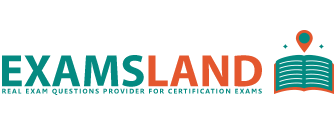Free Exam I: Finance Theory, Financial Instruments, Financial Markets – 2015 Edition Exam 8006 Exam Practice Test
8006 Exam Features
In Just $59 You can Access
- All Official Question Types
- Interactive Web-Based Practice Test Software
- No Installation or 3rd Party Software Required
- Customize your practice sessions (Free Demo)
- 24/7 Customer Support
Total Questions: 287
-
Which of the following assumptions underlie the 'square root of time' rule used for computing volatility estimates over different time horizons?1. asset returns are independent and identically distributed (i.i.d.)II. volatility is constant over timeIII. no serial correlation in the forward projection of volatilityIV. negative serial correlations exist in the time series of returns
Answer: 4 Next Question -
Which of the following is one of the basic axioms on which the principle of maximum expected utility is based:
Answer: 1 Next Question -
Security A and B both have expected returns of 10%, but the standard deviation of Security A is 10% while that of security B is 20%. Borrowings are not permitted. A portfolio manager who wishes to maximize his probability of earning a 25% return during the year should invest in:
Answer: 3 Next Question -
Determine the price of a 3 year bond paying a 5% coupon. The 1,2 and 3 year spot rates are 5%, 6% and 7% respectively. Assume a face value of $100.
Answer: 1 Next Question -
For a stock that does not pay dividends, which of the following represents the delta of a futures contract?
Answer: 2 Next Question -
A currency with a lower interest rate will trade:
Answer: 2 Next Question -
Which of the following reflects the pricing convention for currency forwards, where one of the currencies is USD?
Answer: 4 Next Question -
Which of the following is not a relevant consideration for a trader desirous of delta hedging his or her options portfolio?
Answer: 2 Next Question -
What is the standard deviation (in dollars) of a portfolio worth $10,000, of which $4,000 is invested in Stock A, with an expected return of 10% and standard deviation of 20%; and the rest in Stock B, with an expected return of 12% and a standard deviation of 25%. The correlation between the two stocks is 0.6.
Answer: 1 Next Question -
Suppose the S&P is trading at a level of 1000. Using continuously compounded rates, calculate the futures price for a contract expiring in three months, assuming expected dividends to be 2% and the interest rate for futures funding to be 5% (both rates expressed as continuously compounded rates)
Answer: 3 Next Question
Total Questions: 287
